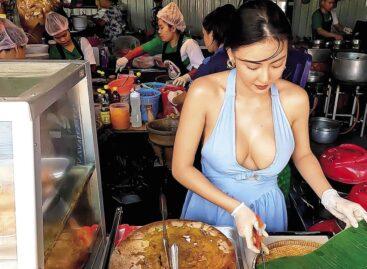Registered trademark
Experts and fans of Hungarian palinka are doing everything in their power to educate the public about the criteria to be used for distinguishing quality products from bad quality ones. In recent years, significant progress has been made in the struggle to restore the old reputation of Hungarian palinka. However, accession to the EU has done more to protect palinka than local legislation. Since 2002, only spirits of Hungarian origin and made from fruits are allowed to use the name palinka in the EU, though Romania is also allowed to use a very similar word (palinca). It has “only” taken six years for the Hungarian parliament to draft legislation known as the palinka law, which is aimed at defining the differences between palinka and other spirits. – Prescribing the use of a special label to distinguish palinka from other spirits has been a great step forward – say Márton Lakatos, owner of Madarasi Pálinkafőzde Kft. However, the creation of a law about palinka and National Palinka Council has not been sufficient to solve all problems. Weather is one of these problems, as palinka can only be made legally from fruits produced in Hungary. Another issue is that EU legislators have excluded Hungarian speaking regions in neighbouring countries from the area where palinka can be made. Palinka probably does not have the same potential for international success as grappa or cognac, because production is insufficient. According to Mrs. Orosz dr. Erzsébet Prekop, CEO of Miskolci Likőrgyár Zrt, current legislation offers adequate protection for quality palinka. In the opinion of Márton Lakatos, the palinka law is not sufficient in itself. Palinka also needs to be promoted, which requires money, more precisely money from the taxpayers. Palinka distilleries pay a lot of taxes, part of which could be spent on international promotional activities. According to Mrs. Kun Amanda Farkas, brand manager of Zwack they would be able to achieve a noticeable international presence with their premium palinkas. Today, the USA, Canada, the Netherlands and Israel are the four markets where palinka is already present. Production of Zwack Sándor Nemes Pálinkas is only sufficient to satisfy domestic demand at the moment. A lot of money is needed for effective international marketing, which can only come from sales of lower price palinkas produced on a massive scale. – We entered the market with our first premium quality palinka sold under the name 895 Hunnium in 2007 – says István Király sales and marketing director of Drink Hungaria. This is intended to be their superbrand. Last year, 0.3 percent of total revenues were spent on the promotion of this brand. Another problem for premium palinkas is that distribution channels are different from those generally used. According to Istán Király, direct representation is the system to be used for HoReCa sales. Manufacturers and distributors are focusing on the domestic market at present, though all of them would like to see a higher international awareness of palinka. Manufacturers and distributors think of each other primarily as rivals, even though they know that they would need to join forces if they want progress to continue.
A campaign for responsible and civilised palinka consumption has been launched by the Agricultural Marketing Centre recently, using billboards, press advertisements and a palinka web site.
Related news
Related news
First We Feast studio, which produces Hot Ones, has been sold – George Soros’ company is among the new owners
Buzzfeed has sold its First We Feast studio, which produces…
Read more >(HU) Az ételárus nehéz kenyere – A nap videója
Sorry, this entry is only available in HU.
Read more >





